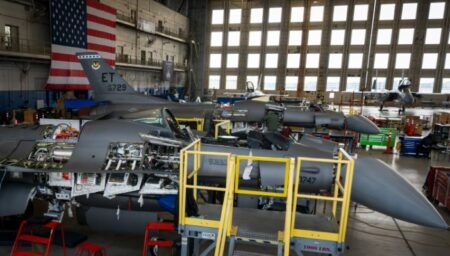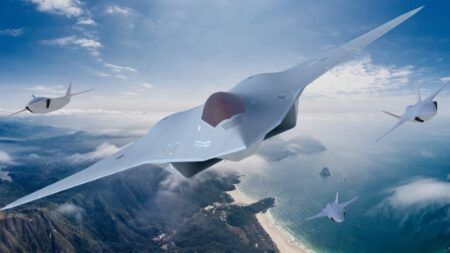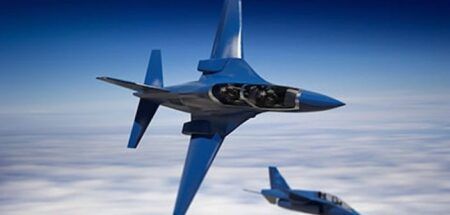A team of engineers at Arnold Engineering Development Complex (AEDC) is supporting the continued development and testing of the Towed Airborne Plume Simulator (TAPS), a simulator that can be towed behind aircraft for testing missile warning and infrared countermeasure systems.
Dr Robert Hiers, principal investigator for TAPS at AEDC in Tennessee, stated that TAPS is directly aligned with the AEDC mission of providing test tools to the developmental and operational test communities.
“TAPS has been used to test sensor systems for the C-17 Globemaster III and F-35 Lightning II Joint Strike Fighter Aircraft,” Hiers said.
TAPS is unique in that it consists of a towed pod that contains a pyrophoric burner.
“A pyrophoric fuel is one that combusts on contact with air,” Hiers said. “TAPS contains valves and a control system that allow precise control of the flow rate of the pyrophoric fuel. In this manner, we can simulate the temporal behavior of missile plumes.”
The simulator is used to test missile warning systems on aircraft by being towed behind one aircraft while the missile warning system to be tested, the System Under Test, or SUT, is installed on another.
“The TAPS pyrophoric plume is controlled to simulate the signature of threat missiles,” Hiers said. “The SUT sensor is monitoring for threats, and, if TAPS does its job, the SUT sensor will be put through its paces.
“Since we don’t shoot real missiles at manned aircraft in order to test missile warning systems, TAPS provides the next best overall test technique. The missile warning system is installed on the aircraft and is interacting with all the aircraft systems. TAPS provides an operational realism that cannot be duplicated with ground-based simulators or hardware-in-the-loop simulations.”
AEDC test teams have been involved with TAPS since it began in 2002 with an Analysis of Alternatives for the burner system. This was followed by a burner development program, proof of principle and proof of concept burner testing, and a first flight test was completed 2008.
“Current TAPS development efforts are focused on adding capability, including extension of the flight envelope at lower altitudes and airspeeds to support missile warning system testing on helicopters; extension to higher altitudes and airspeeds to enable better simulation of air-to-air missile shots; and brighter pyrophoric burners in order to simulate larger missiles,” Hiers said.
Edited by Michael Jones
March 29, 2017




